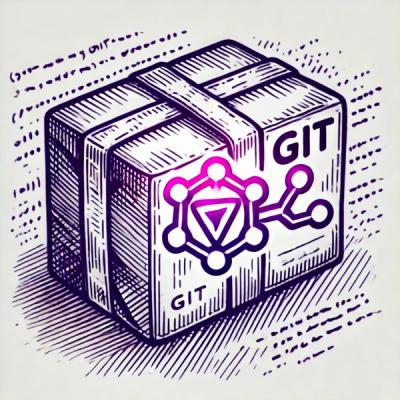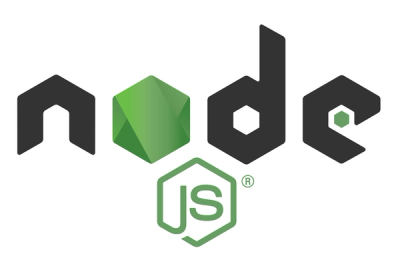sketchzone


You want to create a little inspector for your programming language or data structure or something: your user writes some text document and you will use your "inspector" to show them something --- some JavaScript widget that will render something based on the text the user provided provided.
I talked more about the motivation behind sketchzone in this blog post. The sketchzone package is intended to encapsulate a bunch of "price of entry" quality-of-life issues that a browser-based implementation of such a tool is going to encounter. You provide the inspector, and sketchzone provides:
- Codemirror integration for the editor
- Persistance of multiple sketches via IndexedDB
- Multiple tabs
- Browse/reopen closed documents
- Sharable links using URL hashes
- A mobile-friendly mode that switches between the editor and inspector
- Light/dark mode
This is fundamentally made for an audience of one (me), but reach out if you'd like to use it yourself and run into trouble. sketchzone is currently licensed under the GPL-3 and CC-BY-NC-SA licenses (whichever you prefer), but if neither of those licenses work for you let me know.
Implementing an inspector
Your job if you're using this library is to implement the types in impelementer-types.ts. Specifically, you need to provide a function createAndMountInspector that takes a DOM element and a string document, creates and mounts the inspector to the given DOM element, and optionally returns an Inspector object.
I highly recommend using your own codemirror extensions rather than relying on the defaults:
import { EditorView, keymap, lineNumbers } from '@codemirror/view';
import { defaultKeymap, history, historyKeymap } from '@codemirror/commands';
const codemirrorExtensions = [
lineNumbers(),
history(),
EditorView.lineWrapping,
keymap.of([...defaultKeymap, ...historyKeymap]),
];
Examples
These examples are all built on Glitch as a static site that uses Vite to roll up sketchzone's dependencies on React and Codemirror.
- Simplest possible example - deceptively simple enough, uses defaults for everything. Loading a document just displays its length.
- Simple example - a better example of a basic configuration, which uses a button to show off how tabs maintain their own inspectors.
- Simple example (react) - sketchzone works really well with writing a simple inspector in React. This is exactly the same as the last simple example, but built with React instead of injecting using
innerHTML to slam a bunch of HTML into the document.
By returning an object containing 1-4 functions from the createAndMountInspector() function, the behavior of sketchzone can be configured to support a couple of different uses cases:
- Using unmount() to always unload - the
unmount() function is called whenever you are about to stop viewing an inspector, and in this example, we return a truthy value from the unmount() function so that sketchzone will terminate and destroy the inspector. - Using destroy() to reclaim resources - if an inspector uses resources that need to be reclaimed when the tab is closed for good, that can be done in the
destroy() function. - Using reload() to stick around - the default behavior is to unmount, destroy, and re-initialize an inspector whenever the reload button is pressed. It's possible to keep the inspector around by defining
reload(). - Using unmount() and remount() to pause - having
unmount() return true can keep tabs that aren't open from consuming resources, but if you want to do a little bit more work to tell the inspector how to suspend itself when it's unmounted, and then resume when it's remounted, it's possible to conserve resources without deleting all the user's state.
Some more advanced examples:
Structure
Internally the thing the user edits is called a document, and the thing that you must define in order to use sketchzone in your project is the "inspector." These are the names that sketchzone uses to talk about itself:
C /-------------------------------------\
o | Tab1 x Tab2 x Tab3 x Ta[+] Logo |
n | /--------\ /----------------------\ |
f | | Editor | | Inspector controller | |
i | | | \----------------------/ |
g | | | /----------------------\ |
| | | | Inspector | |
m | | | | | |
e | | | | | |
n | \--------/ \----------------------/ |
u \-------------------------------------/
The app assumes it has full control over the window, and that the body of the HTML document looks like this:
<body id="body-root">
<main id="main-root">
<div id="sketchzone-config"></div>
<div id="sketchzone-container">
<div id="sketchzone-header">
<div id="sketchzone-tabs"></div>
<div id="sketchzone-logo"></div>
</div>
<div id="sketchzone-active-sketch">
<div id="sketchzone-codemirror-root"></div>
<div id="sketchzone-divider"></div>
<div id="sketchzone-inspector-root">
<div id="sketchzone-inspector-controller" class="zone1"></div>
<div id="sketchzone-inspector-contents"></div>
</div>
</div>
</div>
</main>
<div id="modal-root"></div>
</body>
Configuring Style
Many CSS variables attached to the <body> element are intended to be modified for specific users of sketchzone.
Style
body {
--sketchzone-mono-font-family: 'Fira Mono', monospace;
--sketchzone-ui-font-family: 'Fira Sans Condensed', sans-serif;
--sketchzone-line-numbers-font-family: var(--sketchzone-mono);
--sketchzone-radius: 8px;
--sketchzone-button-height: 2rem;
}
Dimensions
body {
--sketchzone-outer-padding: 12px;
--sketchzone-small-padding: 8px;
--sketchzone-large-padding: 16px;
--sketchzone-tab-bottom-padding: 10px;
--sketchzone-fixed-padding: 16px;
--sketchzone-outer-padding-narrow: 4px;
--sketchzone-small-padding-narrow: 6px;
--sketchzone-large-padding-narrow: 10px;
}
When the page width is narrower than 650px, a media query switches in the -narrow variants, as well as going from a 2-pane view showing both the text and the inspector a 1-pane view that switches between the text and the inspector.
Vertical height is determined by the following:
------------------------------------
| --sketchzone-outer-padding
------------------------------------ begin main rectangle
| --sketchzone-small-padding
------------------------------------
| --sketchzone-button-height
| Tab switcher buttons & Logo
------------------------------------
| --sketchzone-tab-bottom-padding
------------------------------------ begin sketch-specific rectangles
| --sketchzone-sketch-height (calculated)
------------------------------------ begin sketch-specific rectangles
| --sketchzone-small-padding
------------------------------------ end main rectangle
| --sketchzone-outer-padding
------------------------------------
Color scheme
Light and dark mode both use 10 colors. The scheme here uses OKLCH to maintain a consistency of relative perceptual brightness when switching between light and dark mode, while keeping text in a range that allows light mode to have vibrant and contrasting color schemes.
body {
--sketchzone-dark-1-background: oklch(27% 0 0);
--sketchzone-dark-1-text: oklch(67% 0 0);
--sketchzone-dark-1-active-button-background: oklch(32% 0 0);
--sketchzone-dark-1-active-button-text: oklch(72% 0 0);
--sketchzone-dark-2-background: oklch(37% 0 0);
--sketchzone-dark-2-text: oklch(77% 0 0);
--sketchzone-dark-2-active-button-background: oklch(42% 0 0);
--sketchzone-dark-2-active-button-text: oklch(82% 0 0);
--sketchzone-dark-shadow: oklch(72% 0 0);
--sketchzone-dark-overlay: oklch(72% 0 0 / 30%);
--sketchzone-light-1-background: oklch(97% 0 0);
--sketchzone-light-1-text: oklch(57% 0 0);
--sketchzone-light-1-active-button-background: oklch(92% 0 0);
--sketchzone-light-1-active-button-text: oklch(52% 0 0);
--sketchzone-light-2-background: oklch(87% 0 0);
--sketchzone-light-2-text: oklch(47% 0 0);
--sketchzone-light-2-active-button-background: oklch(82% 0 0);
--sketchzone-light-2-active-button-text: oklch(42% 0 0);
--sketchzone-light-shadow: oklch(52% 0 0);
--sketchzone-light-overlay: oklch(52% 0 0 / 30%);
}




